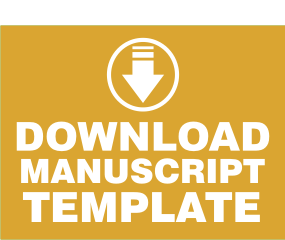The Influence of Regulatory Compliance, Use of Information Technology, and Leadership Commitment on Securing Fixed Assets in the Regional Revenue and Assets Agency of East Nusa Tenggara Province
Abstract
One of the regional assets managed by the regional government is fixed assets. In relation to fixed asset management, in the NTT Provincial Government, the authority to manage fixed assets rests with the NTT Provincial Regional Revenue and Assets Agency. Based on NTT Province Regional Regulation Number 1 of 2019 concerning Amendments to East Nusa Tenggara Province Regional Regulation Number 9 of 2016 concerning the Formation and Structure of East Nusa Tenggara Province Regional Apparatus. The Regional Revenue and Assets Agency has the task of "assisting the Governor in carrying out some regional household affairs in the field of Regional Revenue and Asset Management". Based on balance sheet data from the NTT Provincial Government, it was found that the nominal value of fixed assets had increased and some had decreased. Throughout 2018-2023, the nominal assets of land, equipment and machinery, buildings and structures, and other fixed assets have increased. Road, irrigation and network assets experienced a decline in 2019 and an increase in 2020-2023. Construction assets under construction experienced an increase in 2019, 2020 and 2022, while in 2021 and 2023 they experienced a decrease. The formulation of the problem in this research is as follows. What is the description of regulatory compliance, use of information technology, leadership commitment and management of fixed assets at the Regional Revenue and Assets Agency of East Nusa Tenggara Province? Does regulatory compliance have a positive and significant effect on fixed assets by the Regional Revenue and Assets Agency? East Nusa Tenggara Province.
Downloads
References
Ghozali, Imam. 2009. SPSS and Multivariate Analysis. Semarang: Faculty of Economics, Diponegoro University
____________. 2016. Multivariate Analysis Application with IBM SPSS 23 Program. 8th Edition. Semarang: Diponegoro University Publishing Agency.
Hamzah B. Uno and Nina Lamatenggo, 2011.Communication and Information Technology Learning, Jakarta: PT.
Intan, Aini. 2014. Leaders and Leadership in Organizations. Surabaya: Jaya Madina Printing.
Kieso, Donald E. 2008. Introduction to Accounting. 7th Edition. (Translated by Desi. Adhariani and Vera Diyanti). Jakarta: Salemba Empat.
Levis, Leta Rafael. 2013. Farmer Behavior Research Methods. Maumere: Ledalero Publisher.
Mahmudi, 2010.Public Sector Performance Management. Publisher of UUP STIM YKPN.
Mardiasmo, 2005. Public Sector Accounting. Andi. Yogyakarta.
Munir. 2009.Distance Learning Based on Information and Communication Technology. Bandung: Alphabet.
Ridwan, Ahmad. 2015. Introduction to Information Technology. Surabaya: CV. Al-Hasan
English2009. Introduction to Accounting. Jakarta: Erlangga Publisher.
Santoso, Singgih. 2012. Complete Guide to SPSS Version 20. Jakarta: PT Elex Media Komputindo.
The Faithful, Bambang, 2004.Research Guide with Quantitative Approach. Surakarta: UMS Postgraduate Program.
Simamora. 2012. Management Accounting. Jakarta: Star Gate Publisher.
Siregar, Doli, D. 2004. Asset Management.Jakarta: Gramedia Main Library.
Somantri, Ating and Sambas Ali Muhidin, 2006.Application of Statistics in Research. London: Library of Faith.
The Sujarweni, V. Wiratna. 2015.Business and Economic Research Methodology. Yogyakarta: Pustaka Baru Press.
Sugiyono. 2013.Quantitative, Qualitative and R&D Research Methods. Bandung: Alphabet.
____________. 2017. Statistics for Research. Bandung: Publisher CV. Alfabeta.
Supranto, J. 2000. Statistics Theory and Applications. Sixth Edition. Jakarta: Erlangga.
Sutaryo. 2008.Regional Asset Management. Journal of Accounting. Vol 1. No 2.
Suyanto. 2005.Social Research Methods. Jakarta: Kencana Prenanda Media Group.
Tahir, Arifin. 2015.Public Policy & Organizer TransparencyLocal government. Bandung: Alphabet.
Umami, Dance. 2010. Scope of Regional Assets. Pekanbaru: CV. Bina Grafindo
Wibowo. 2012. Performance Management (3rd Edition). Jakarta: Rajawali Pers.
Widodo. 2019. Regional Finance and Assets. Riau: CV Pelita Ilmu.
Yusuf, M., 2010. Eight Steps of Regional Asset Management Towards the Best Regional Financial Management., Jakarta: Salemba Empat.
Journal
Damanik. Nadia. 2019. The Influence of Compliance with Regulations on the Management of Fixed Assets of the Simalungun Regency Government. Journal of Accounting Media Vol. 8 No. 1
Muftiarani and Mulya 2020. The Influence of Ownership Structure, Tax Avoidance, Auditor Switching and Public Accounting Firm Reputation on Timeliness of Financial Report Submission. Journal of Accounting and Finance Vol. 9 No. 1.
Paramitha, Nadine. 2017. The Influence of Compliance with Regulations, Human Resource Competence and Leadership Commitment on Fixed Asset Management of the West Java Provincial Government. Journal of Economics Vol 5 No. 3.
Rosihan. 2017. The Influence of Regional Apparatus Quality, Regulation, Information System and Commitment on Asset Management.Journal of Regional Economic and Financial StudiesVol. 2. No. 1.
Sulistiawati, Elvina. 2016. Factors Affecting the Management of Regional Assets in SKPD of Langkat Regency Government with the Role of Leadership as a Moderating Variable. University of North Sumatra. Journal of Business Economics Vol. 3 No. 2.
Yuliana S. 2021. The Influence of Financial Ratios on Profit Growth in Construction and Building Subsector Companies Listed on the Indonesia Stock Exchange in 2016 - 2020. Journal of Finance and Business Vol. 2 No. 2
.
The author who will publish the manuscript at DiE: Jurnal Ilmu Ekonomi dan Manajemen, agree to the following terms:
1. Authors retain copyright and grant the journal right of first publication with the work simultaneously licensed under a Creative Commons Attribution ShareAlike License that allows others to share the work with an acknowledgment of the work's authorship and initial publication in this journal.
2. Authors are able to enter into separate, additional contractual arrangements for the non-exclusive distribution of the journal's published version of the work (e.g., post it to an institutional repository or publish it in a book), with an acknowledgment of its initial publication in this journal.
3. Authors are permitted and encouraged to post their work online (e.g., in institutional repositories, pre-prints sites or on their website) prior to and during the submission process, as it can lead to productive exchanges, as well as earlier and greater dissemination of published work




